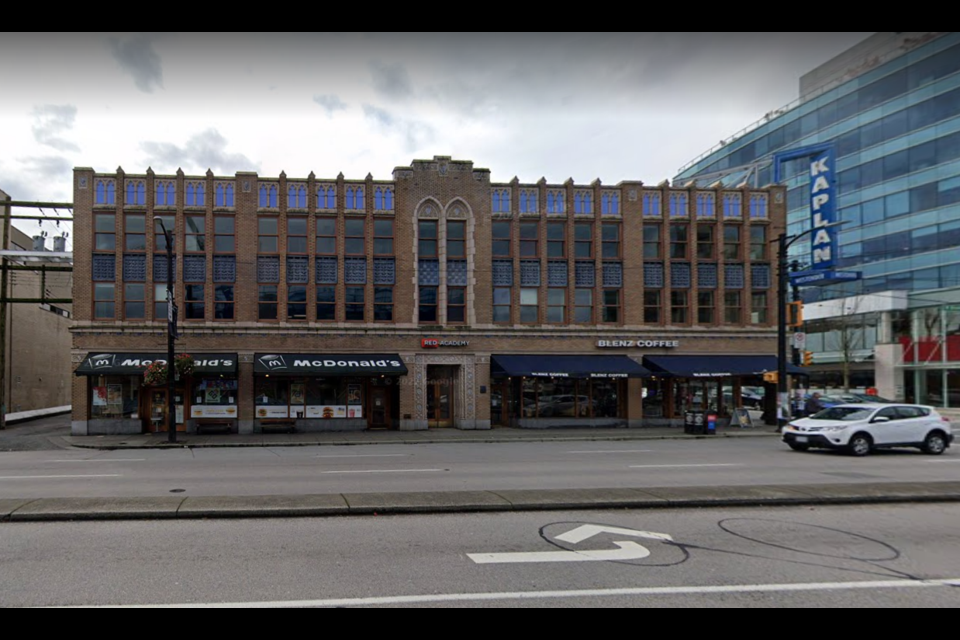The Dick building on West Broadway, named for prominent late 1920s to early 1930s MLA and businessman William Dick, is probably better known as the Kaplan building.
The blue neon Kaplan sign, which hangs from the side of the municipally designated A-list heritage building, catches the eye and distracts from the more unusual features of the facade.
The building was completed in 1929 and at some point between then and 1970 a rotating neon sign was erected. No one is entirely sure when it went up, but there are historic photos from the Â鶹´«Ã½Ó³»Archives that show the building advertising Pitman Computer Training.
Pitman Community College moved into the Dick Building in 1930, according to a 1992 article in the , so it's possible the sign went up then.
It stands to reason since Â鶹´«Ã½Ó³»secured its reputation as a city of neon between 1930 and 1950. Kitty corner to the Dick building was the famous Aristocratic Restaurant, which had its own neon sign with its own story.
At some point — most likely in the '90s when the school vacated the building — the Pitman sign was altered to read Kaplan. It no longer rotates and was painted blue to match the building's exterior but the sign still hangs there today and is considered a part of the building's heritage. So much so that the Pattison Sign Group got in trouble back in 2015 for changing it without a permit from the city.
In response to the heritage sign's alteration, the city issued an order to the building owner to obtain a permit or restore the sign to its original state. In early 2018, a city inspector confirmed the sign was restored.
For a brief moment, the blue was replaced with an orange-red that angered many locals and the Kaplan letters were replaced with Chinese characters for AEG Education Services, which briefly occupied the multi-office space but doesn't anymore.
However, the most interesting part of the building is the decoration: it's uncharacteristic of Vancouver.
The building's exterior was designed by architects Townley & Matheson, who also designed city hall and Tudor Manor. They were inspired by Gothic architecture and incorporated arches, multi-coloured terra cotta floral motifs, embellished concrete spandrel panels, which are essentially square slabs that separate windows on different floors, and brick cladding.
The bold experimental design choices have been described as art deco despite the Gothic inspiration giving the building a somewhat era-confused look that clashes with the neon signage.
The building was restored in 1998 and as part of Vancouver's Heritage Award Program alongside Bryan Adams for his work on the Workshop Studio in Gastown.




